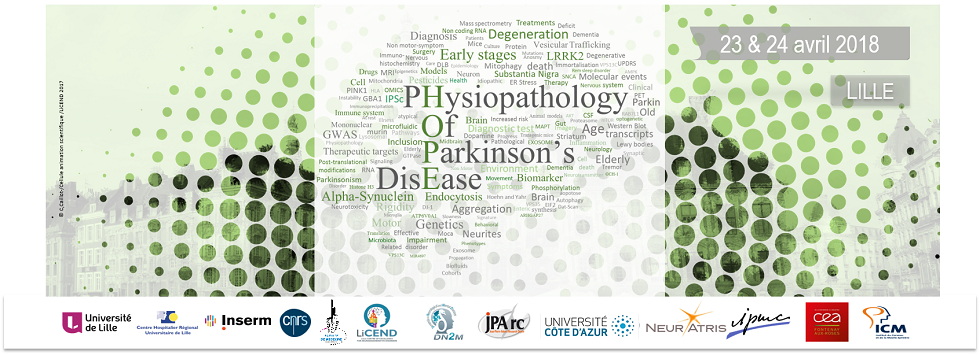Parkinson's Disease (PD) is the most frequent neurodegenerative disease after Alzheimer's Disease. It is characterized by the selective loss of dopaminergic (DA) neurons in the substantia nigra pars compacta (SNpc) and the formation of Lewy bodies, composed primarily of aggregates of α-synuclein (α-syn). Familial forms of PD are due to the duplication/triplication of the gene encoding α-syn, or to certain point mutations, such as the A53T mutation which can accelerate α-syn aggregation. Another gene, encoding the Leucin-Rich Repeat Kinase 2 (LRRK2), also shows automosal dominant mutations linked to PD. Among these, the G2019S mutation is the most frequent leading to familial forms of PD and these patients cannot be clinically distinguished from idiopathic patients. It has also been suggested that α-syn and LRRK2 act in concert in the pathogenesis of PD, and this hypothesis is supported by the in vivo results of our laboratory. Indeed, we demonstrated that the AAV-mediated overexpression of LRRK2G2019S in the SNpc of rats increases the dopaminergic cell death induced by the AAV-mediated overexpression of α-synA53T.
Now, our goal is to determine how these two proteins, α-syn and LRRK2, can potentiate neuronal cell death. We focused on the cellular mechanisms linked to mitochondria, as this organelle has been shown to be implicated in the pathogenesis of PD. Moreover, α-syn and LRRK2 have both been found to induce mitochondrial defects. For this purpose, we use a model of rat primary cortical neurons infected with lentiviral vectors in order to overexpress the wild type or mutant forms of α-syn and LRRK2. We characterize the effect of co-expressing these two proteins on mitochondrial physiology by different biochemical (ATP and ROS production) and imaging methods (mitochondrial morphology) and on cell viability. Preliminary results support the existence of an interplay between α-syn and LRRK2 in the cellular response to a rotenone-induced mitochondrial toxicity.
Our long term objective is to find the main pathways impacted by α-syn and LRRK2 to identify new molecular targets and thereafter develop new therapeutic strategies for the treatment of PD.
- Poster

 PDF version
PDF version
